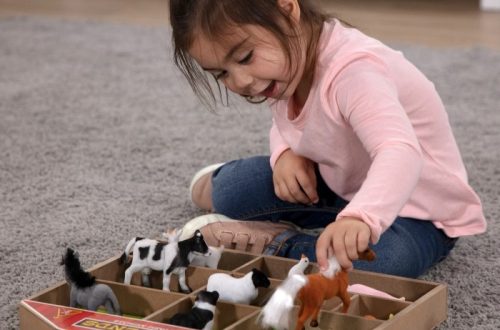Part 1: The Importance of Play in Childhood
Play is a vital aspect of a child’s growth and development. It is through play that children learn, explore, and make sense of the world around them. Understanding the significance of play can help caregivers create meaningful and enriching playtime experiences for children.
Point 1: The Power of Fun
Fun is not just a delightful byproduct of play; it is an essential ingredient that fuels children’s engagement and motivation to learn. When children participate in activities they find enjoyable and entertaining, they become more enthusiastic, attentive, and open to absorbing new knowledge and skills. Fun-filled play experiences create positive associations with learning, making children more receptive to educational concepts and promoting a love for lifelong learning. The joy and excitement that accompany fun playtimes create a positive emotional state, which enhances children’s overall development. It fosters a sense of curiosity, creativity, and exploration, enabling children to actively participate in their own learning journey. Furthermore, when children find pleasure in their play experiences, they are more likely to persist in their efforts, overcome challenges, and develop a growth mindset.
Point 2: Holistic Development
Play promotes holistic development, encompassing cognitive, physical, social, and emotional aspects. It stimulates creativity, problem-solving skills, physical coordination, communication, and emotional well-being. By integrating different types of play, caregivers can support comprehensive development.
Part 2: Nurturing Creativity and Imagination
Creativity and imagination play a vital role in a child’s playtime experiences. Nurturing these aspects can foster a child’s ability to think outside the box, solve problems, and express themselves.

Point 1: Open-Ended Play
Open-ended play encourages creativity and imagination. By providing materials and opportunities for children to explore and create freely, caregivers allow for limitless possibilities and empower children to construct their own play experiences.
Point 2: Pretend Play and Storytelling
Pretend play and storytelling are powerful tools for imaginative development. Children can assume different roles, create narratives, and engage in make-believe scenarios. This type of play enhances language skills, emotional intelligence, and cognitive flexibility.
Part 3: Incorporating Learning into Play
Play can be a natural and effective way to facilitate learning. By infusing educational elements into playtime, caregivers can enhance children’s knowledge acquisition and skill development.
Point 1: Educational Toys and Games
Educational toys and games provide structured learning experiences within playful contexts. They promote numeracy, literacy, problem-solving, and critical thinking skills. Caregivers should select age-appropriate toys that align with children’s interests and developmental needs.
Point 2: Sensory Play and STEM Activities
Sensory play and STEM (Science, Technology, Engineering, and Mathematics) activities integrate learning into tactile and hands-on experiences. Through sensory exploration and STEM-based play, children develop important cognitive and scientific thinking skills.
Part 4: Balancing Structured and Unstructured Play
Both structured and unstructured play have their benefits. Balancing these types of play allows children to experience the benefits of both guided learning and self-directed exploration.
Point 1: Structured Play
Structured play involves specific rules and goals, such as board games or organized sports. It teaches children skills like following instructions, taking turns, and cooperating with others.
Point 2: Unstructured Play
Unstructured play involves free, self-directed exploration, where children can follow their curiosity and interests. It encourages autonomy, creativity, and problem-solving as children take the lead in their play experiences.
In conclusion, play is a crucial component of a child’s development, providing opportunities for fun, creativity, and learning. By nurturing creativity and imagination, caregivers can empower children to think creatively, problem-solve, and express themselves. Incorporating educational elements into playtime enhances knowledge acquisition and skill development. Balancing structured and unstructured play allows children to experience guided learning and self-directed exploration. Ultimately, by understanding the importance of play and its various dimensions, caregivers can create engaging and meaningful playtime experiences that support children’s holistic growth and lay the foundation for a lifelong love of learning.


